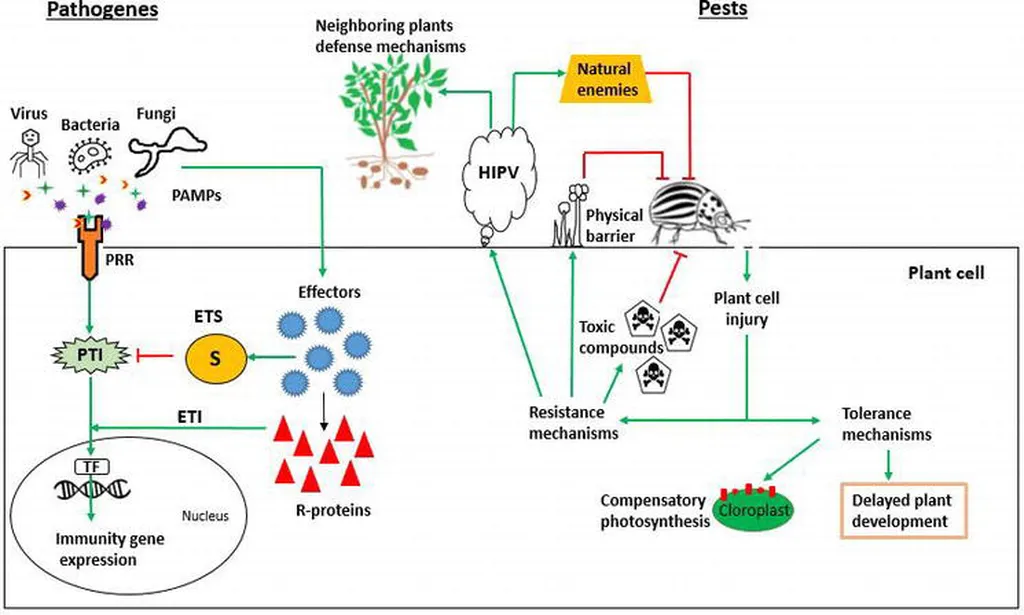In the world of potato farming, the battle against pathogens and pests is a constant struggle, one that researchers are tirelessly working to tip in favor of the crops. A recent study published in *Studia Universitatis Babes-Bolyai Chemia* (Chemical Studies of Babeș-Bolyai University) offers a promising avenue for enhancing potato resistance through somatic hybridization, a technique that merges the genetic material of different plants without sexual reproduction. The research, led by Daniel Cruceriu from the Department of Molecular Biology and Biotechnology at Babes-Bolyai University in Cluj-Napoca, Romania, explores how this method can bolster the potato’s defenses against environmental stresses.
Potatoes, a staple crop worldwide, are notoriously susceptible to a variety of diseases and pests, which can lead to significant yield losses. To combat this, researchers have turned to Solanum bulbocastanum, a wild potato relative known for its robust resistance genes. However, the challenge lies in the fact that S. bulbocastanum is sexually incompatible with the common potato, Solanum tuberosum. This is where somatic hybridization comes into play, offering a way to bypass this incompatibility and transfer valuable resistance traits.
Cruceriu and his team focused on two key aspects of plant defense: trichomes (the tiny hair-like structures on leaves) and secondary metabolites, which include polyphenols and flavonoids—compounds known for their antioxidant properties. “By understanding how these mechanisms work in the wild species and how they can be transferred to cultivated potatoes, we can develop more resilient crops,” Cruceriu explained.
The study compared the wild species, the cultivated potato variety ‘Rasant,’ and two of their somatic hybrids, which differed in chromosome numbers. The researchers found that S. bulbocastanum outperformed S. tuberosum cv. Rasant in all measured parameters, including trichome density and the production of polyphenols and flavonoids. Notably, the somatic hybrid 1508/5 showed a remarkable similarity to the wild species in terms of trichome characteristics, while exhibiting intermediate levels of polyphenols, flavonoids, and antioxidant activity compared to its parents.
“This hybrid could be a game-changer for potato breeding programs,” Cruceriu noted. “It combines the best of both worlds—the resistance traits of the wild species and the agricultural qualities of the cultivated potato.”
The implications of this research extend beyond the lab. For farmers, the development of more resistant potato varieties could mean reduced reliance on chemical pesticides and fungicides, leading to lower production costs and a more sustainable agricultural practice. For the food industry, it promises a more stable supply of this essential crop, which is a cornerstone of many global food systems.
As Cruceriu and his team continue to refine their techniques, the potential for somatic hybridization to revolutionize potato farming becomes increasingly clear. “Our goal is to create crops that can withstand the challenges of a changing climate and evolving pests,” Cruceriu said. “This research is a step in that direction, and we are excited about the possibilities it opens up.”
With the findings published in *Studia Universitatis Babes-Bolyai Chemia*, the scientific community now has a clearer path forward in the quest to fortify potato crops against the myriad threats they face. As the research progresses, it could very well shape the future of potato agriculture, offering hope for a more resilient and sustainable food supply.

